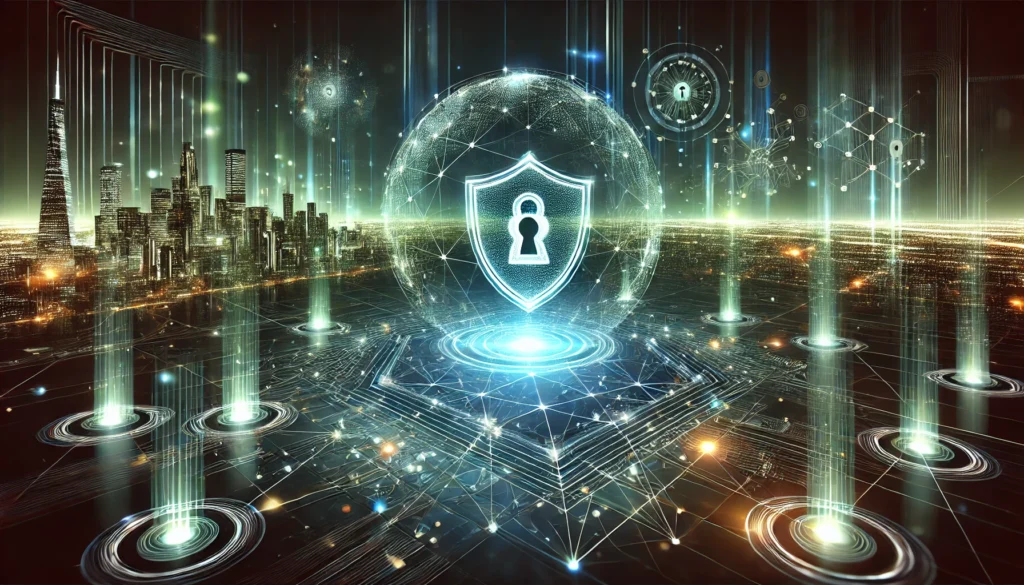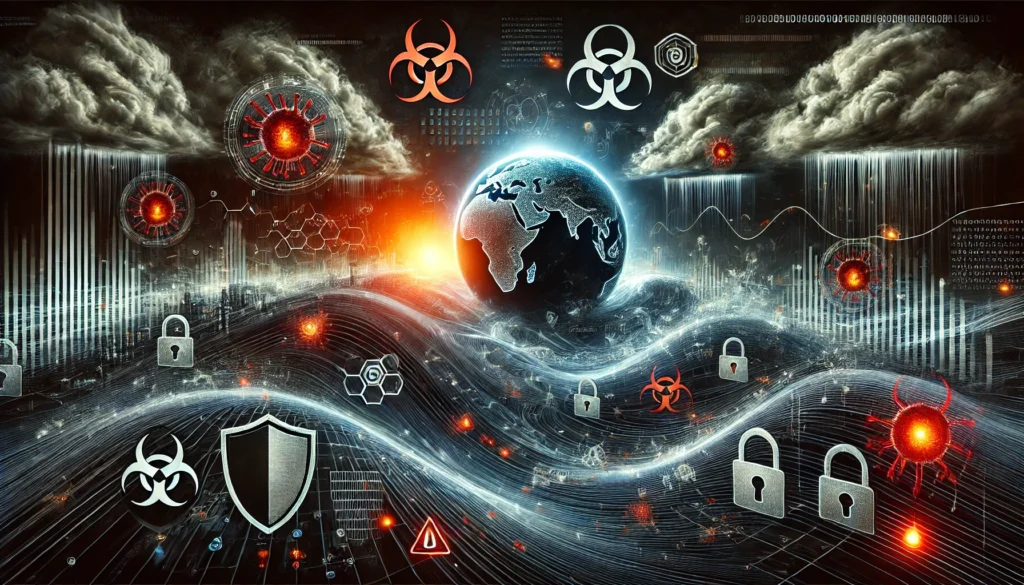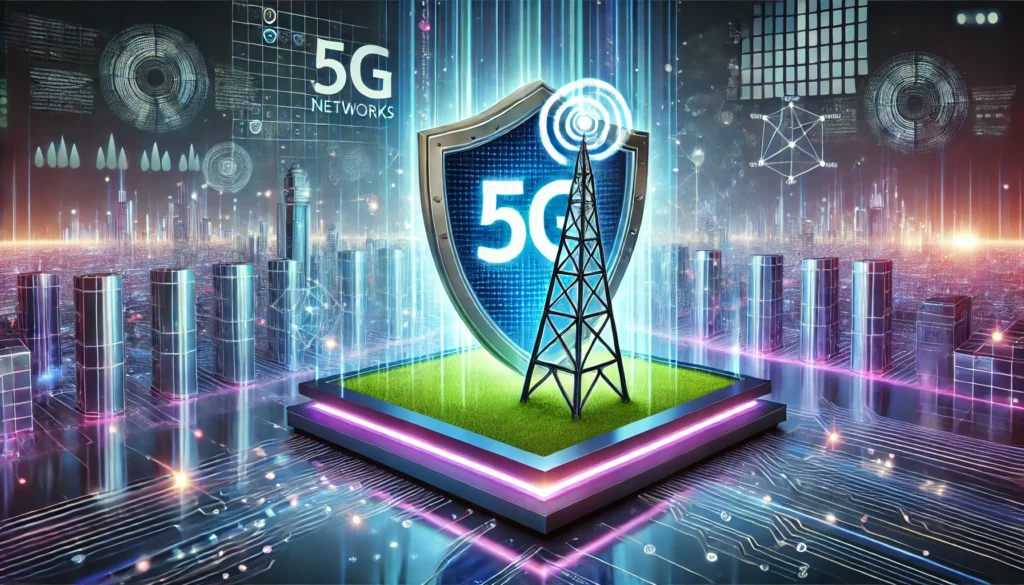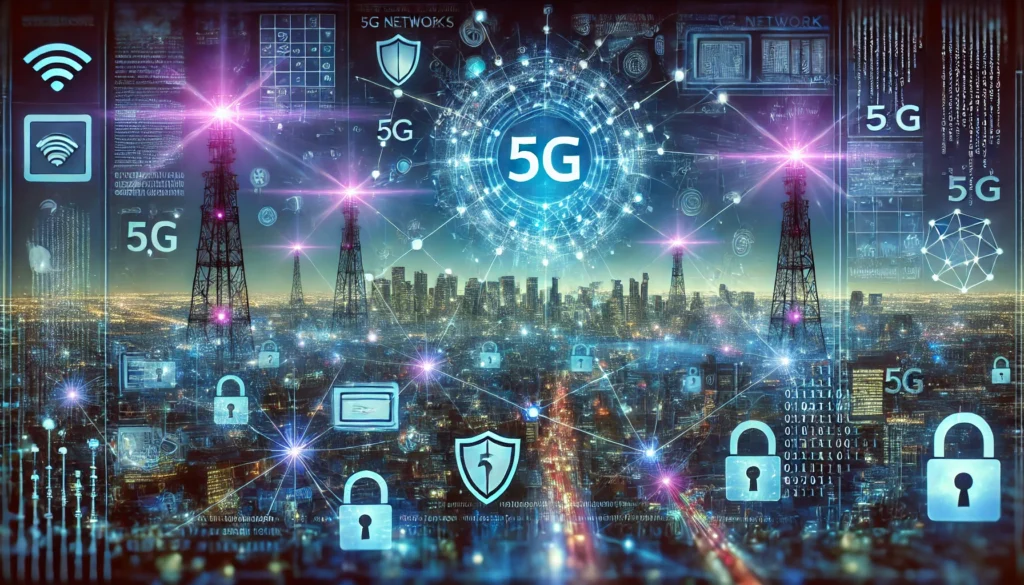In this article, we will explore the cybersecurity in the age of 5G networks and conversation almost the measures that can be taken to protect these systems. The rollout of 5G frameworks has checked a transformative period in the world of communication and development. With speedier speeds, lower dormancy, and the capacity to interface a huge number of contraptions, 5G is set to revolutionize businesses amplifying from healthcare to transportation. Be that as it may, with these headways come unused challenges, particularly in the space of cybersecurity. As 5G frameworks gotten to be more facilitates into each day lives, ensuring their security gets to be principal.
What is 5G?
Before diving into cybersecurity concerns, it’s basic to get it what 5G is and why it’s so dynamic. 5G implies the fifth era of remote innovation. It ensures speedier web speeds—up to 100 times faster than 4G—lower inertness (the time it takes for data to travel from source to objective), and a huge increase in how numerous gadgets can interface at the same time. This has major proposals for the Web of Things (IoT), free vehicles, more distant healthcare, sharp cities, and various other sectors.
While 5G offers various benefits, it too brings with it a more complex framework and modern roads for cyberattacks.
The Rise of Cybersecurity Concerns

As 5G innovation proceeds to extend, the dangers to cybersecurity are developing. The worldwide and interconnected nature of 5G systems makes an indeed bigger assault surface for programmers to misuse. Underneath are a few of the key cybersecurity challenges related with 5G:
1. Expanded Assault Surface
The rollout of 5G systems includes millions of modern gadgets that will interface to the web. This incorporates everything from savvy domestic gadgets to mechanical machines and indeed independent vehicles. As more gadgets ended up interconnected, the potential for vulnerabilities increments. Each of these gadgets, no matter how little or apparently inconsequential, is a section point for cybercriminals to exploit.
2. Arrange Cutting and Virtualization
One of the most energizing highlights of 5G is organize cutting, which permits administrators to make virtual systems inside the physical 5G arrange. This empowers distinctive divisions to have customized organize arrangements based on their needs. For illustration, a healthcare supplier seems have a committed cut for inaccessible surgeries, whereas a self-driving car company seem have a cut optimized for vehicle-to-vehicle communication. Be that as it may, the virtualization of systems presents modern security dangers. If one arranges cut is compromised, it might possibly influence others, driving to far reaching security breaches.
3. Supply Chain Vulnerabilities
The 5G rollout depends intensely on a tremendous supply chain including various producers, engineers, and third-party benefit suppliers. This interconnecting increments the chance of cyberattacks focusing on vulnerabilities in the supply chain. For case, if an equipment provider or computer program supplier is compromised, aggressors seem possibly pick up get to the 5G foundation. This was a concern in the past with 4G systems, but 5G’s complexity increases the risks.
4. End-to-End Encryption Challenges
One of the fundamental columns of cybersecurity is encryption, which guarantees that information transmitted over systems is ensured from unauthorized get to. Whereas 4G systems depend on encryption to defend client information, 5G systems confront extra challenges. The sheer volume of information transmitted over 5G, combined with the require for moo inactivity, can make it more troublesome to secure. End-to-end encryption may not continuously be doable due to the require for quicker information handling, which might take off client information more helpless to cyberattacks.
5. Interdependency with Other Basic Infrastructures
5G systems will not work in segregation; they will be coordinates with basic foundations such as control networks, transportation frameworks, and healthcare frameworks. This makes a unsafe crossing point between cybersecurity and physical security. A cyberattack on a 5G arrange seem possibly trigger a chain response that influences other frameworks, driving to broad disturbances. For case, a programmer seems possibly impair communication frameworks in independent vehicles, causing mishaps or activity gridlock.
Potential Cyber Dangers in the Age of 5G

Given the expanded assault surface and complexity of 5G systems, it’s basic to get it the different cyber dangers that might target these networks.
1. DDoS (Dispersed Refusal of Benefit) Attacks
A DDoS assault happens when different frameworks surge an arrange with an overpowering sum of activity, causing it to crash. With 5G, the number of associated gadgets will skyrocket, making systems indeed more vulnerable to DDoS assaults. An effective assault on a 5G arrange seem possibly paralyze a huge parcel of the web, influencing everything from communications to monetary transactions.
2. Man-in-the-Middle Attacks
In a man-in-the-middle (MitM) catch, cybercriminals caught and conceivably alter communications between two parties without their data. With the rise of IoT contraptions in 5G systems, such assaults gotten to be more likely. For layout, in a canny city environment, a program design might have captured information between sensors and control frameworks, driving to compromised activity signals or other essential system.
3. Rebel Base Stations and Fake 5G Networks
Hackers seem set up rebel base stations that imitate true blue 5G towers, tricking gadgets into interfacing to them. Once associated, programmers seem caught delicate data, counting login qualifications, credit card points of interest, or individual information. These sorts of assaults are known as “fake base stations” or “IMSI catchers,” and they are a developing concern in the 5G era.
4. Firmware and Program Vulnerabilities
5G depends on an enormous run of program and equipment components, and each component may have vulnerabilities. Programmers may target these shortcomings to pick up unauthorized get to the arrange. Once interior, they can misuse the vulnerabilities to conduct observation, take information, or disturb operations. In addition, keeping the firmware and computer program of billions of associated gadgets up to date gets to be a gigantic challenge in itself.
How to Secure 5G Networks

Given the huge number of cybersecurity dangers in the age of 5G, it is vital to take proactive measures to secure these systems. A few procedures and advances can be utilized to decrease the dangers related with 5G networks.
1. Upgraded Encryption Protocols
To secure information in 5G systems, more grounded encryption conventions must be executed. This incorporates updating encryption calculations for communication between gadgets, base stations, and servers. Moreover, end-to-end encryption ought to be prioritized to guarantee that information is ensured all through its whole travel over the network.
2. AI and Machine Learning for Danger Detection
Artificial Insights (AI) and Machine Learning (ML) can play a crucial part in recognizing peculiarities in 5G systems. By analyzing designs of behavior, AI frameworks can recognize suspicious exercises or potential cyberattacks in real-time. These frameworks can independently react to dangers some time recently they heighten, guaranteeing quicker moderation and lessening the hazard of damage.
3. Zero Believe Security Model
The Zero Believe security show works on the rule that no gadget or client is trusted by default. In the setting of 5G, this implies each gadget, client, and application must be ceaselessly verified and authorized. Indeed, gadgets inside the organize require to be confirmed at each step to guarantee they are not compromised.
4. Decentralized Security Architecture
A decentralized approach to arrange security can offer assistance moderate dangers related with centralized control. With a decentralized show, indeed if one portion of the organize is compromised, the rest of the framework can proceed to work safely. This approach includes dispersing security capacities over numerous layers of the 5G framework, guaranteeing repetition and diminishing single focuses of failure.
5. Collaboration Over Stakeholders
Securing 5G systems is not the duty of a single substance. Governments, organize suppliers, gadget producers, and buyers must work together to distinguish vulnerabilities and execute arrangements. Sharing data approximately cyber dangers and best hones can offer assistance make a more secure 5G ecosystem.
Conclusion:
While 5G systems offer monstrous benefits, they too present unused cybersecurity challenges that must be tended to. As more gadgets and administrations ended up interconnected, the potential for cyberattacks develops. Understanding the dangers and taking proactive measures to secure 5G systems will be vital to guaranteeing the security and security of clients. By executing more grounded encryption, leveraging AI and machine learning for danger location, and embracing decentralized security models, we can way better secure the endless and complex 5G environment. Eventually, a collaborative approach will be basic to building a secure 5G future for everybody.
Read more posts:

